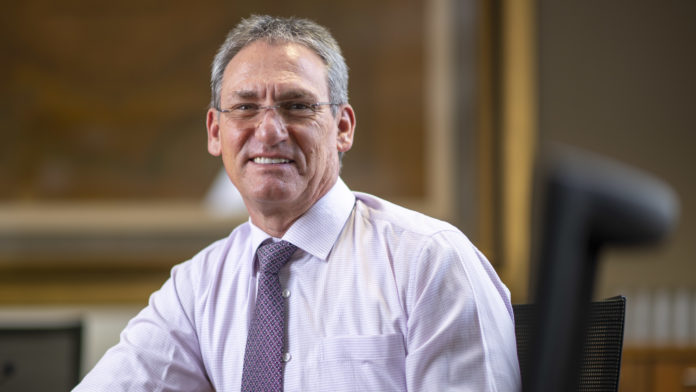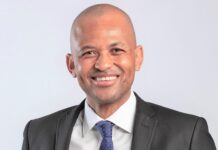
THE departure of Chris Griffith, former CEO of Anglo American Platinum (Amplats), from Vedanta this month is the latest in a series of setbacks for the Indian miner. It has a knack for attracting South Africa’s best mining talent, only to lose it, and in fairly short order.
The list of lost talent is significant.
Deshnee Naidoo, a former Anglo American executive, left Vedanta Zinc in 2020 for a plum job at Brazilian miner Vale in Canada. AngloGold Ashanti CEO Srinivasan Venkatakrishnan joined Vedanta as its CEO in 2018, only to leave less than a year later. Griffith, headhunted to run its new base metals division, lasted less than two years.
Former Rio Tinto boss Tom Albanese ended three years at Vedanta for “family reasons”. That was the longest a CEO has hung around in a period of seven years, during which time the firm had two interim CEOs. Cynthia Carroll, the former CEO of Anglo American, can at least claim her employ at Vedanta, aimed at refocusing its aluminium business, was only ever going to be brief.
The common denominator is self-made billionaire and Vedanta founder Anil Agarwal, of whom Naidoo once said: “It’s his business, his rules.” Naidoo reunited with Agarwal this year when he appointed her CEO of Vedanta Resources, in which the parent company, Vedanta Ltd, is the shareholder — of which more shortly.
Agarwal is a mercurial figure. In 2017, he acquired a £2bn option in Anglo American, funded with convertible bonds. It made his investment vehicle Volcan the group’s second-largest shareholder, amid talk of joint ventures with Anglo in African projects.
Agarwal’s company reversed out of the transaction two years later. Talk that $500m in profits were booked from buying and selling the Anglo “stake” is somewhat leavened by the fact that the cost of the coupons on bonds alone, used to engineer the purchase of the Anglo stake, cost Agarwal $300m before other corporate costs. From the outside, it looked like an extravagant, fruitless game of Stratego.
This backstory is relevant because another Agarwal about-turn may be the reason Griffith left the company. He was employed with a plan to invest $1.3bn in Vedanta’s Zambian copper assets, as part of a broader strategy to split out and list the base metals division — which has simply not materialised. Griffith declined to comment on this, except to confirm to Miningmx he had resigned.
A root cause could be profound financial problems at Vedanta.
A report on July 9 by the Delaware investigative financial research group Viceroy says Vedanta Resources is overwhelmed by debt. “Net debt … has increased by $6.7bn (about 200%) since FY22,” the report says. “The entire group structure is financially unsustainable, operationally compromised, and poses a severe, underappreciated risk to creditors.” Vedanta called the verdict “baseless and malicious”.
As for Griffith, his departure will be a major blow to an undoubted talent. In his late 50s, he was a rising star in the Anglo firmament, running Amplats for seven years. He was considered an outside bet for the top job at Anglo when it became clear Mark Cutifani was preparing to retire. That theory was not publicly tested, as Griffith surprisingly left Amplats in 2020. When he just as surprisingly reappeared as CEO of Gold Fields in 2021, expectations were high.
What followed was a rollercoaster of a ride that lasted about two years. In the end, Griffith proved too strong a cup of tea for Gold Fields shareholders, who declined to support his bold takeover offer for Canadian firm Yamana Gold. Priced at $6.7bn in Gold Fields shares, the deal would have been a bargain at today’s gold price.
In any event, he quit Gold Fields, saying it was better to preserve the group’s reputation. During the bid, nearly half the executive committee announced resignations. Griffith, a mining engineer, is a change agent of note and perhaps too robust a personality for some.
Shortly after taking the job at Vedanta, he told Miningmx: “I’ve still got a huge amount of energy.” So it is a cruel cut that among Griffith’s disappointments at Vedanta Base Metals will be the inability to kick on at Gamsberg zinc mine in the Northern Cape, a 250,000t/year operation and one of the few brand-new mining investments in the country in the past decade.
Agarwal pledged to invest R20bn in South Africa in 2018 when confidence in the new presidency of Cyril Ramaphosa was at its peak. Of this pledge, R12bn has been committed and allocated to the doubling of zinc concentrate from Gamsberg. Right now, however, there’s no zinc smelter, which, if approved, would see another R12bn in spend.
Whether that happens is questionable. Before departing, Griffith told Miningmx: “For us to put the next big smelter in the Northern Cape we would need assurance we’ve got power solutions.” The plant would consume 150MW, which is “not something that’s going to happen overnight”. If it does eventually happen, notwithstanding Vedanta’s alleged debt issues, it won’t be Griffith pressing the button.
A version of this story first appeared in the Financial Mail.










